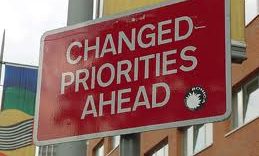 Workers on the minimum wage are set to see a pay rise from 1 April 2022 as the UK government announces an increase in the National Minimum Wage, the National Living Wage, and the Apprentice Rate to keep up with the rising cost of living.
Workers on the minimum wage are set to see a pay rise from 1 April 2022 as the UK government announces an increase in the National Minimum Wage, the National Living Wage, and the Apprentice Rate to keep up with the rising cost of living.
What are the different types of minimum wage?
The minimum wage that a worker in the UK should receive depends on their age and whether or not they are an apprentice.
- National Minimum Wage - The least amount of pay a worker under the age of 23 can receive per hour, which is staggered at different rates as follows: under-18s, ages 18-20, and those aged 21-22.
- National Living Wage - The least amount of pay a worker over the age of 23 can receive per hour.
- Apprentice Rate - The least amount of pay an apprentice aged under 19, or aged over 19 and in the first year of their apprenticeship, can receive per hour.
Apprentices older than 19 who have already finished the first year of their apprenticeship are entitled to the relevant minimum wage for their age group.
All the different types of minimum wage are the same across England, Scotland, Wales and Northern Ireland.
Any employer which fails to pay the relevant minimum wage can be fined by HMRC. If you think you are not receiving the minimum wage you are entitled to, you can file a complaint on the HMRC website, get advice from the Acas website, or call its helpline on 0300 123 1100.
The rates for all three minimum wage types usually increase every April. The Low Pay Commission - an independent advisory body - has recommended that the government adjust minimum wages to reflect the rising cost of living as a result of the COVID-19 pandemic.
How is the minimum wage changing?
The UK government has announced changes to all of the different types of minimum wage to take effect from 1 April 2022.
The National Living Wage for over-23s will rise from £8.91 to £9.50 an hour. The National Minimum Wage for those aged 21-22 will rise from £8.36 to £9.18, for 18 to 20 year olds from £6.56 to £6.83, and for under-18s from £4.62 to £4.81 an hour. The Apprentice Rate will rise from £4.30 to £4.81 an hour.
The change in the National Living Wage for over-23s marks a 6.6% increase - more than twice the current 3.1% rise in the cost of living - although this is partly offset by the expectation that the price of gas and electricity will rise further in the coming months. In addition, it comes just after the removal of the £20 per week uplift to Universal Credit, as well as a hike in National Insurance payments.
The table below outlines the upcoming changes to the different types of minimum wage:
Minimum wage explained
| Minimum Wage Type | Hourly Rate 2021/22 | Hourly Rate 2022/23 | Change |
| National Living Wage for over-23s | £8.91 | £9.50 | +6.6% |
| National Minimum Wage for those aged 21-22 | £8.36 | £9.18 | +9.8% |
| National Minimum Wage for those aged 18-20 | £6.56 | £6.83 | +4.1% |
| National Minimum Wage for under-18s | £4.62 | £4.81 | +4.1% |
| Apprentice Rate | £4.30 | £4.81 | +11.9% |
October 2021 Budget
The move to increase minimum wages comes after the Chancellor of the Exchequer announced the Budget in the House of Commons, detailing how the government intends to carry out tax and spending changes for the year ahead. A £150bn spending package has been announced, with extra funding for the NHS and almost £80bn set aside for infrastructure development among the main commitments.
Public sector workers will also see their pay cheques increase, as the “temporary pause” in salary progression brought in during the COVID-19 pandemic is lifted. Nurses, teachers and members of the armed forces are among those who could see a pay rise, but the details are not expected to be released until spring next year. It has also not been confirmed if the expected pay rises will rise above inflation, which is projected to hit 4% by the end of 2021.
To read more about the Budget and what it entails, head to the GOV.UK website for a summary of all the major announcements.






